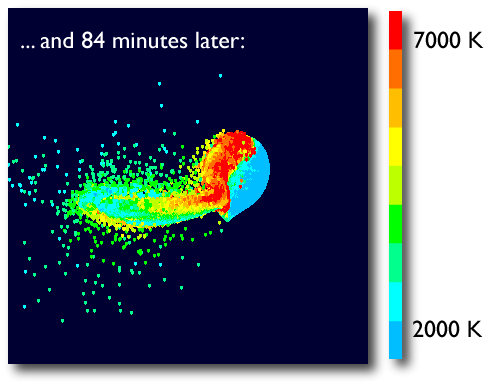Hawaii0
greg posted in worlds on March 11th, 2008

Image Source.
Over the past two days, I got the opportunity to fly to Hawaii to give two talks for the Keck Observatory’s Evening With Astronomers series. The talks focused on extrasolar planets (here’s a link to the slides in Quicktime format, ~40MB , along with the audio files of (1) a planetary system in a 2:1 resonance, (2) an unstable planetary system, and (3) another unstable system). Both talks were on Kona coast of the Big Island, where, behind the palm trees, Mauna Kea looms up 13,796 feet in the hazy volcanic distance.
The landscape here resembles nothing so much as a habitable, terraformed Mars. Hardened ropes of lava run down to the water’s edge:

In the pre-dawn light this morning, the air was totally silent, and it was easy to imagine that I was actually on Mars, before the water was gone, when a Northern hemispheric ocean lapped up against the lava of the lowermost slopes of Elysium Mons:

Image Source.
In the last few years the Martian landscape has become much more familiar, as the Spirit and Opportunity rovers crawl across the surface and radio home their photographs:

At Kona, looking out toward the lava fields, the view is positively Martian, with the most immediate difference being a sky that is a hazy blue-white rather than a hazy salmon-white. Here, the Ala Loa trail recedes into the jagged distance of what could easily be Mars:

On Mars, however, one generally has a fairly reasonable sense of what the 360-degree panorama will look like even if only part of the horizon is in view. On Earth, however, the situation can be quite different. Here’s the view that one gets simply by turning and looking in the opposite direction down the Ala Loa trail:

(On a marginally related note, our Alpha Centauri ApJ paper is starting to pick up some news coverage. Here’s a link to a story by National Geographic News.)












































































